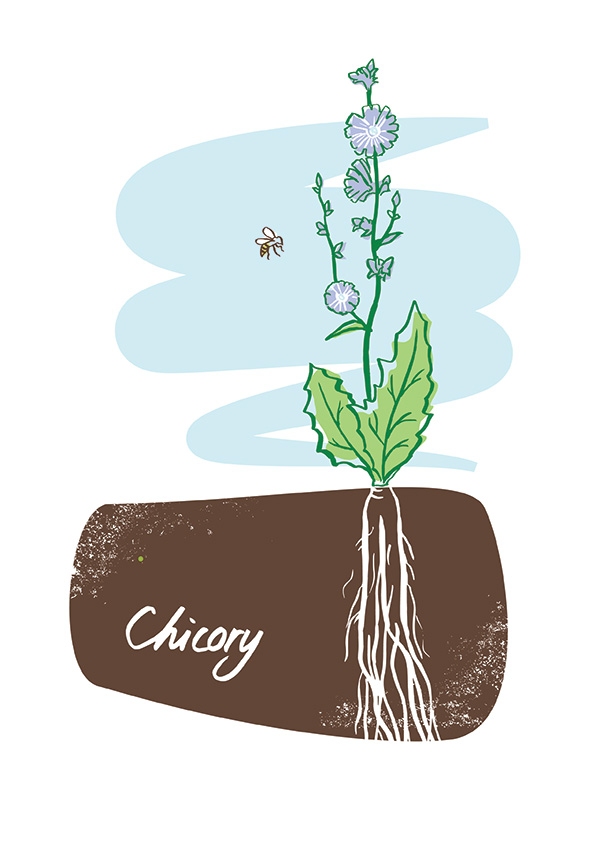

Chicory (Cichorium intybus) is a perennial mineral rich forage herb with an eye catching cornflower blue flower that has a long taproot capable of penetrating to great depth, breaking through plough pans and leaving the soil aerated, aiding drainage and crop root development. It’s frequently used in combination with other species as a soil improving species. It is also a known anthelmintic species.
Chicory reliably lasts 3-4 years but can last for up to 8 when not over grazed. In order to get the full effect it should be left in situ for at least several years. It makes excellent forage for fattening lambs, with a protein content of around 17-18% making it comparable to the true clovers. It has anthelmintic properties, making it useful to ruminant livestock farmers looking to reduce the worm burden, especially in sheep and lambs. The plant also contains a range of nutrients, Selenium, Copper, Iodine, Zinc, Cobalt and Manganese.
When to Sow: It is important to sow into a warm seedbed either between April and early May or in the autumn between August and early September. Sowing later than this is risky as Chicory is relatively slow to establish when conditions cool down.
Sowing Rate: 0.50 g/m2 - 2kg per acre - 5kg per ha
Preparation: The most successful results come from sowing into a newly prepared seedbed. Aim to cultivate the top soil to about 5cm, with a light cultivator or discs. The finished seedbed should be fine but firm, with no clods. Several passes with a cultivator may be needed to achieve this.
Sowing: Chicory is a small seed and should be shallow sown at around 1cm deep. The soil should be well rolled after sowing to increase soil contact with the seed
Management: Initially weeds can be a problem during establishment, but most annual weeds will disappear once a mowing or grazing regime becomes established. Chicory will need topping regularly at around three to four week intervals to control growth and keep the plant leafy.
Be aware that from year 2 onwards chicory will develop a woody stalk and seed head if left unmanaged during mid to late July. This can become tough, woody and less palatable, known as bolting.
However Chicory plants that are allowed to bolt and flower during the autumn can go on to produce an abundance of small seeds particularly attractive to flocks of Gold Finches.
Date Posted: 12th May 2023



